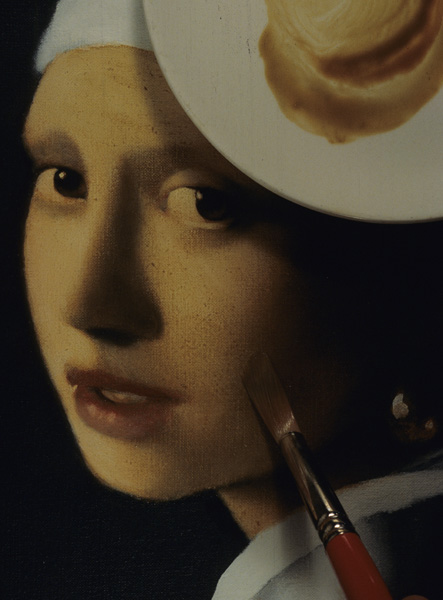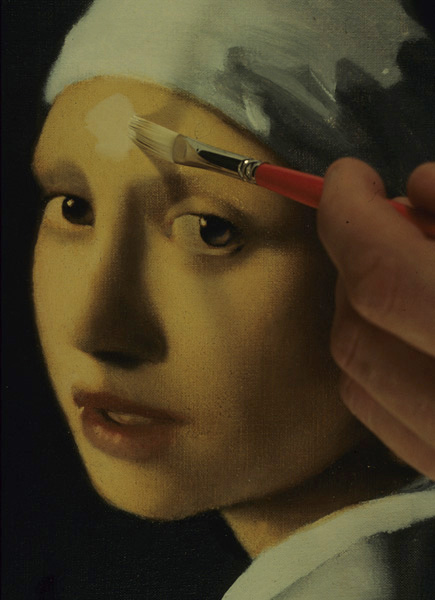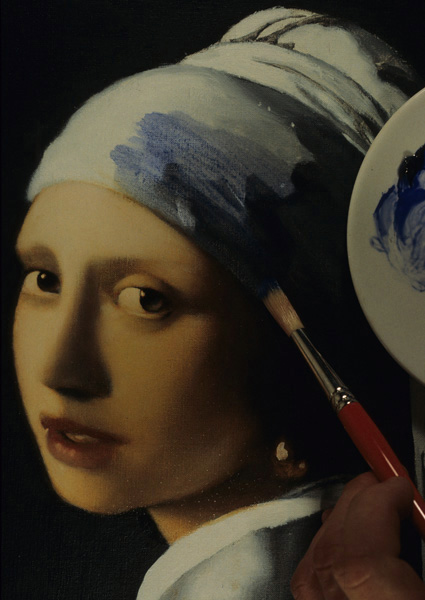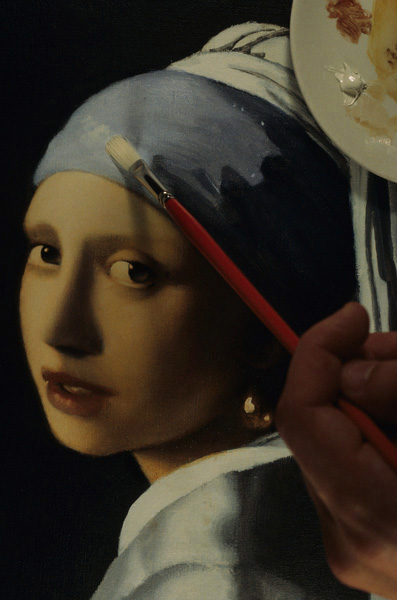|
PAGE 6:
Painting a Copy of Jan Vermeer's "Girl with a Pearl Earring"
Using Oil
Glazing Technique and a Grisaille (Monochromatic Gray) Underpainting
|
|
|
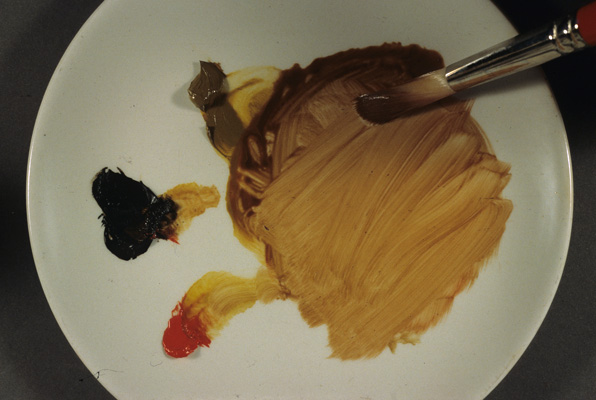 |
| The plate I am using
as a palette shows the cadmium red, yellow ochre, and raw umber I am using
to mix the overall glazes of flesh tone for the face. Keep in mine that
the colors you use to paint flesh tones depend entirely on lighting environment
that the person is in. Hence, there is no such thing as a "flesh color".
The color of flesh can be almost any color, depending on the lighting. Regarding
the colors that could be used to paint flesh tones, Eugene Delacroix stated,
"Give me mud and I will paint the skin of Venus out of it, if you will
allow me to paint the background with the colors of my choosing." |
|
|
A fourth overall
glaze application is applied. In this case it is also one that has been
mixed with some raw umber to neutralize the color a bit, and keep the
portrait from becoming too garishly colored. A very common mistake when
students experiment with glazes is to use glazes that are too harshly
colored. A brightly colored glaze on top of a darkly shaded area of the
underpainting, in particular, creates an effect in which the color seems
to sit or "float"on top of the dark underpainting beneath it,
which does not create a pleasing effect. |
|
|
Again, white paint is scumbled
into the light areas to bring back the lightness of these areas. |
|
|
...and white is also blended
into the cheek. |
|
|
In this image the white applied
in the prior two images has been blended out and softened. The intensity
of the white has also been reduced as it has mixed with the wet glaze of
color. I am not applying a glaze of blue to the girl's turban (this painting
by Vermeer is alternately known by the title of "Girl in a Turban").
At a certain point it is a good idea to bring out some of the colors in
the surrounding parts of the painting before the face is completed. This
allows you to get a better idea of how the colors of the face are developing
relative to the other colors that surround it, and create its environment.
|
|
|
As with the face, white paint
is also worked into the lighter area of the turban, to bring out the brightness
where the light strikes it most strongly. |
|
|
|
|


